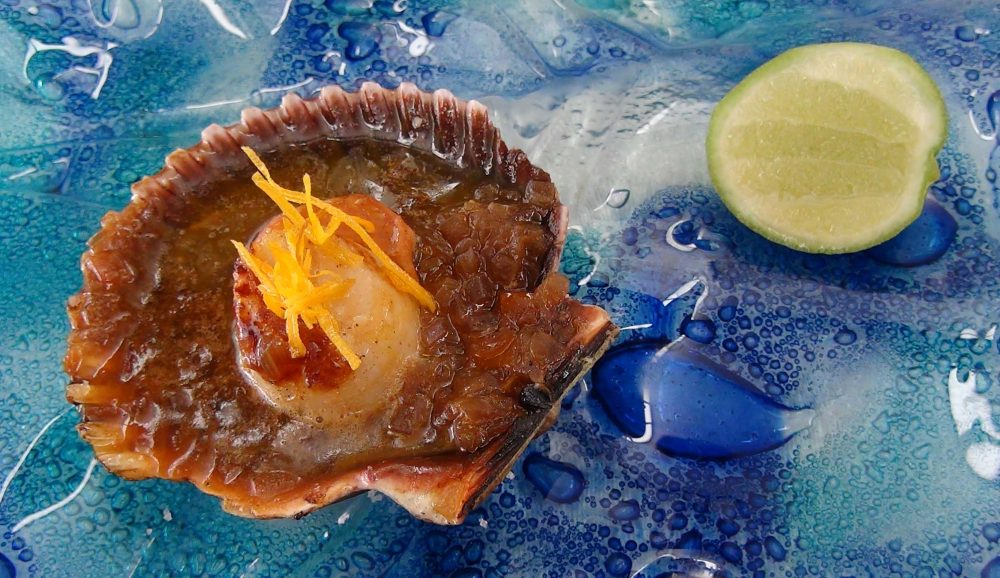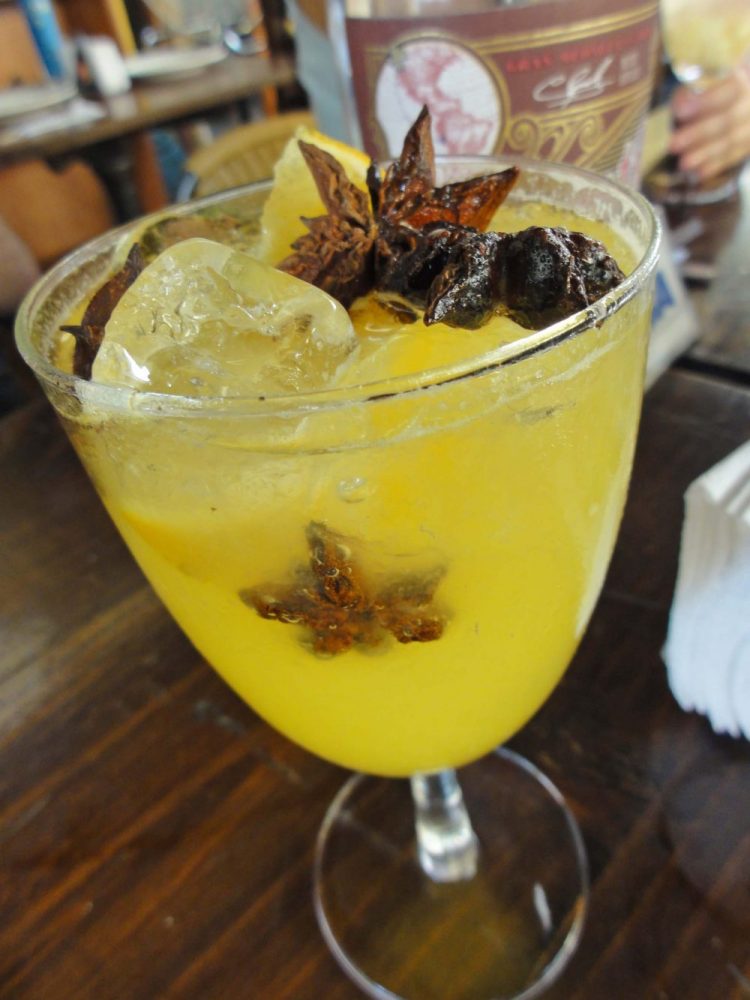Adam Waxman is an award winning travel journalist focusing on…
As incredible as the history and the land of Peru is, it’s the biodiversity that makes Peruvian cuisine so extraordinary. One visit to a local market in Lima, the “gastronomy capital of the Americas,” reveals a proliferation of produce from this, the most bio-diverse country in the world. There’s a myriad of potatoes, corn and beans, fruits that look like props from a science fiction movie and a cornucopia of powerful indigenous ingredients like coca, maca, quinoa and kiwicha—which NASA uses for astronaut meals.
Nature is promiscuous. As the breeze blows, what grows at 300 metres will grow differently at 3,000 metres. Chefs love experimenting with their ingredient base, and Peruvians are open to discover. Eating here is exciting. Dining is a national pastime. There are colours and textures we’ve never before seen on a plate. Ask a Peruvian how many different kinds of potatoes there are in Peru, and you’ll get as many different answers as there are potatoes. We want to taste everything, everywhere, dine at all the restaurants we’ve been told about, and happily learn that when traveling to Peru, pack light, because we’re going to put on weight.
Eat
Peruvian cuisine is a fusion of historical influences from Japan, China and Africa combined with traditional cooking. A long coastline breeds thousands of fish and different kinds of seafood. Ceviche is the new sashimi, and every chef boasts his own colourfully arranged samples from the sea. Between the Pacific and the Amazon, the desert and the Andes, there yields an incomparable base for ambitious young Lima chefs to launch themselves into culinary stardom, and dining in Lima is like watching a chorus line on a night on Broadway, but full of ceviche and pisco cocktails. So inventive, the chefs at these establishments know no bounds:
 • At Maras Restaurante, our first plate is a palette of tuna belly, liquid foie, black crispy rice, caramel paper, ceviche shot glass and causa with scallops in wasabi sauce.
• At Maras Restaurante, our first plate is a palette of tuna belly, liquid foie, black crispy rice, caramel paper, ceviche shot glass and causa with scallops in wasabi sauce.
• Cala serves tender duck margret with a teppanyaki sauce of crunchy blackberry and raspberry, caramel-roasted apple, and a goat cheese layered cake in which our waiter lights a stick of incense.
• Peruvian star chef, Rafael, serves authentic soul cooking–not Peruvian, but international with Peruvian style. His duck, braised and slowly stewed in black beer and onion relish, with coriander and chili rice, is a symphonic burst of flavours. For dessert, he flaunts native lucuma fruit in a thinly sliced mango ravioli.
• On the terrace of Huaca Pucllana, located in a pre-Inca archeological site, a fillet of Amazonian paiche, lightly salted and wonderfully tender, with a sweet and tangy yuca, tomato and chilli mash is a beautiful and tantalizing composition of colour and texture.
• At El Pez Amigo each dish is vibrant and robust. Poached giant crab is stuffed with shrimp, crab and Parmesan while an egg poaches within it. Out-of-this-world, each dish that follows evokes sighs and applause.
• Run by a Peruvian anthropologist, Señorío de Sulco maintains and revitalizes basic elements and traditions with a pan-Peruvian menu. Tender suckling pig, slowly roasted until crisp, is covered in a fruit sauce marinated in pisco.

Drink
What is Pisco you ask? Pisco is a clear Peruvian brandy made entirely from Peruvian grapes distilled directly to proof. There is no added water or sugar—only pure distillation from Peruvian grapes: Quebranta, Negra Corriete, Mollar, Italia, Moscatel, Abilla, Tor.rontel or Uvina. Originating in the port city of Pisco, “The Pisco Trail” runs along a 1,300km stretch of coastal Peru. The drink’s concentrated heat and tropical character make it a versatile and increasingly popular item at every fashionable cocktail bar in Lima and in every great Peruvian chef’s kitchen. They say, “You never forget your first.” For us, Pisco Bar Corner, with its artisanal pisco selection and pisco infusions of purple corn, rocoto pepper, Andean mint and Amazonian root are pure alchemy, and provide the most well balanced cocktails. The atrium of the English and Spanish colonial styled Country Club Hotel—itself a museum of colonial art and furniture—feels like a scene out of The Great Gatsby. At teatime we sip Pisco Sours. The only hotel with its own pisco, its Bar Inglese serves more than 2,000 sours a day. Here too, the Chilcano Festival was born. Chilcano is an increasingly popular Italian influenced cocktail of pisco, lemon juice and ginger ale. A lot of pisco, however, can be classified by its first syllable so, as with any other alcohol, we need to distinguish good quality. When it is good, it is so smooth you can drink it straight and not taste any alcohol; and when it’s not good “you will feel the lion smiling.”
• The Don Amadeo Acholado blend has concentrated white blossom, a soft bouquet, herbaceous notes and sustained character.
• The high altitude of Arequipa enables Torre de La Gala’s intense aromatics, so the Italia has a lovely floral bouquet and balanced heat.
• Quebranta is the most common grape from which to make pisco. Made by Tres Generaciones, this non-aromatic pisco has bold character, balanced heat, and pairs well with the classic Peruvian dish Lomo Saltado.
• Cholo Matias is renowned, and their Torrontel is perfumed with sweet tropical fruits.
• El Sarcay’s Albilla is like fresh air. It has a smooth mouth feel with floral and tropical notes.
• The Campo de Encanta Acholado is bold with very good structure, fresh fruit, floral nose, and is distilled with a separate blend at the end.
“Pisco sour is like a woman’s breast,” we are told, “you can’t have only one, but you should not have more than two.” Blended with fruits and herbs, it’s no wonder they named a national holiday for it.
 And then, of course, there’s Machu Picchu… En route to the Sacred Valley of the Inca we find colourful markets, ancient ruins and direct descendants of a mystical time. On a hike above Cuzco, Quechua women leading their lamas to the summit giggle as they pass. Back in the heart of this cobbled colonial town, we sip coca tea at the luxurious Inkaterra La Casona, a colonial manor house once occupied by conquistadors.
And then, of course, there’s Machu Picchu… En route to the Sacred Valley of the Inca we find colourful markets, ancient ruins and direct descendants of a mystical time. On a hike above Cuzco, Quechua women leading their lamas to the summit giggle as they pass. Back in the heart of this cobbled colonial town, we sip coca tea at the luxurious Inkaterra La Casona, a colonial manor house once occupied by conquistadors.
Midway into the valley we stop at the Tambo del Inka Resort & Spa where we enjoy a quinoa spa treatment consisting of an elaborate course of hydro baths, a coca massage and a quinoa facial. Relaxed and early to rise, we break our fast with buttermilk and black quinoa pancakes with a red wine reduction, local honey and warm house-made kiwicha bread. A morning walk with the chef through his garden is informative, and we stumble upon a patch of never-before-seen mushrooms. He immediately calls to his biologist to identify them and determine if they’re safe to eat. This evening, they’re added to the menu. Respecting ingredients, but employing a Willy Wonka imagination, the chef begins with a mashed truffle foam, toasted Serrano ham and an expanded caramel bubble that, when popped, emits smoked pepper corn. Next up, a trilogy of potatoes layered within glass. Stew, mousse and foam with black salt are exquisite on their own, but make a heavenly blend of textures and tones. An upside-down margarita glass full of smoke is lifted to reveal lamb with crisp almonds and peppers on a light quinoa soufflé.
At the Inkaterra Machu Picchu we follow a stone path through the woods to a tea plantation where we pick fresh leaves and press our own green tea. Nourished by fresh organic yogurt, honey, kiwicha and pollen, we ready for the hike up to Machu Picchu. Winding around hairpin turns and up through the clouds we reach the heritage site, undiscovered by conquistadors and untouched by time, and stop, rapt by one of the most breathtaking vistas in the world. Amazing.
Adam Waxman is an award winning travel journalist focusing on food, wine and well being. As well as an actor in film, television and formerly, the Stratford Festival, he is the Publisher of DINE and Destinations magazine.




